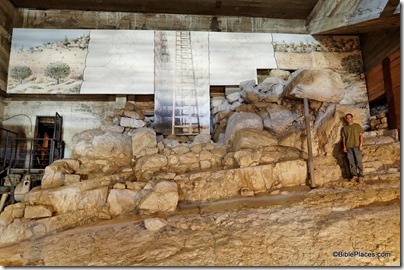From the Jerusalem Post:
The word Philistine has come to denote boorishness, an underdeveloped sense of beauty and sophistication, and vulgar materialism.
But remnants of an ancient Philistine hub now being excavated in the ancient city of Gath tell a different story: one of an advanced society boasting sophisticated architecture and an advanced political life.
Excavators of Tell es-Safi/Gath, one of Israel’s largest archeological sites, resume work this week in search of further remnants of a Philistine temple believed to have been toppled by an earthquake in 8th century BCE – an event familiar to millions the world over through the biblical story of Samson.
The temple was discovered a year ago by a team led by Prof.
Aren Maeir of Bar-Ilan’s University’s Department of Land of Israel Studies and Archaeology. Dating back to the Iron Age (10th century BCE), it features two central pillars in accordance with the image described in the story of Samson in the Book of Judges: “He pulled the two pillars together, and down came the temple on the rulers and all the people in it.”
The team has also uncovered collapsed walls that appear to date from an earthquake in the 8th century BCE – an event that could be identical to the earthquake prophesized by the prophet Amos.
The full story is here. On his blog, Aren Maeir is posting daily updates of the excavations.
HT: Joseph Lauer
